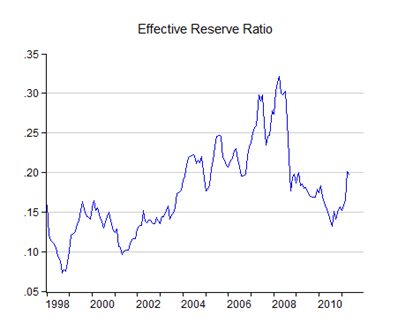After a short hiatus for the beginning of fasting month, I’m back…or at least until we come up to Aidil Fitri ![]()
As a follow up to my post a couple of weeks back on the monetary transmission mechanism, there’s a new working paper out from the IMF that essentially confirms my findings (abstract):
Determinants of Interest Rate Pass-Through: Do Macroeconomic Conditions and Financial Market Structure Matter?
Nikoloz Gigineishvili
Summary: Numerous empirical studies have found that the strength of the interest rate pass-through varies markedly across countries and markets. The causes of such heterogeneity have attracted considerably less attention so far. Unlike other studies that mainly focus on small groups of mostly developed and emerging markets in the same region, this paper expands the cross-sectional coverage to 70 countries from all regions, including low income, emerging and developed countries. It uses a wide range of macroeconomic and financial market structure variables to uncover structural determinants of pass-through. The paper finds that per capita GDP and inflation have positive effects on pass-through, while market volatility has a negative effect. Among financial market variables exchange rate flexibility, credit quality, overhead costs, and banking competition were found to strengthen pass-through, whereas excess banking liquidity to impede it.
My calculated elasticities for Malaysia’s policy interest rate pass through falls right on the average for Asia as a whole. So Malaysia's not that far out of line.
The paper’s conclusions also underscores one thing that’s been eating at me – excess banking liquidity:
Bank reserves kept at BNM have climbed steadily for most of the past decade, and peaked at 30% as a percentage of M3 in 2008. The recession (and capital flight) knocked it back, but it’s since recovered to around 20%.
Another way of looking at this is that excess liquidity is another way of saying financial disintermediation. That’s an awfully long word, but what it means is that some part of the traditional economic function of a bank – the bringing together of borrowers and savers/investors – is taking place outside the banking system, and thus less influenced by policy interest rates. About a third of corporate debt financing is now being handled through the capital markets where the relationship between policy interest rates and market yields are weak, to put it mildly.
But that means for BNM to influence real economic activity requires knowing and acting on all the potential transmission channels, and not just the interest rate/bank credit channel only, something implied by the current policy framework based on the Official Policy Rate. To be fair, the impact of the OPR might not be felt through the pricing of credit/market yields alone – that’s actually quite likely. So for the next couple of months I’ll probably be revisiting this topic fairly often. especially as there’s a lot of uncertainty over BNM’s future monetary policy moves.
Technical Notes:
Gigineishvili, Nikoloz, "Determinants of Interest Rate Pass-Through: Do Macroeconomic Conditions and Financial Market Structure Matter?", IMF Working Paper No. 11/176, July 2011





No comments:
Post a Comment